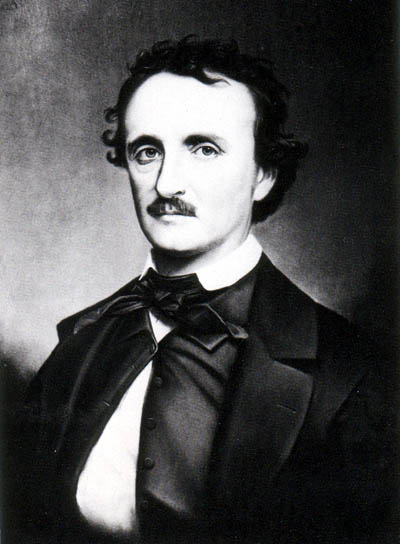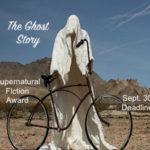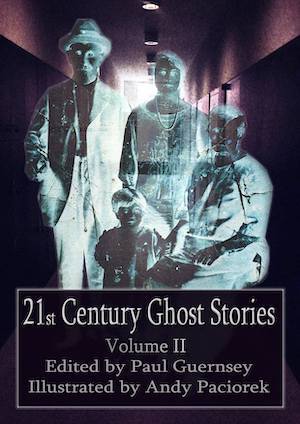THIS LIST IS CHRONOLOGICAL. TO READ THE FULL TEXTS, JUST FOLLOW THE LINKS IN RED.
Horace Walpole (1717-1797)
The Castle Of Otranto (1764)
The Castle Of Otranto features a number of apparitions, but is not entirely a ghost story. It is important to include here because in writing this story Horace Walpole invented the Gothic novel—a genre that combines realism with ghosts and other supernatural elements, and usually sets them in motion within the traditional Gothic environment of a dark, mysterious, castle or an isolated old mansion. Although Gothic fiction began declining in importance after the 1830s, it continued to exert a strong influence on Victorian literature—and particularly on the Victorian ghost story, which enjoyed a “Golden Age” of immense popularity from the 1840s until the start of World War I. To contemporary readers The Castle Of Otranto, with it’s two-dimensional characters and melodramatic occurrences, is likely to seem more like parody than anything truly frightening or suspenseful.
Mary Shelley (1797-1851)
Frankenstein-or, the Modern Prometheus (1818) is not usually thought of as a ghost story. We include it here for a couple of reasons: 1) The author’s original “prompt” for this Gothic horror novel was an agreement among the members of her circle of friends, which included Lord Byron and her future husband, Percy Shelly, that they would each write and share a ghost story, and 2) The Frankenstein monster is actually a revenant, or animated corpse—which at the time the book was written was a popular notion concerning one of the ways in which the dead were thought to come back to haunt the living. The main difference is that, rather than consisting of a single, mouldering corpse, Shelley’s literary revenant was cobbled together from a number of different corpses. Mary Shelly was just 20 years old when she wrote Frankenstein.
Washington Irving (1783-1859)
The Legend Of Sleepy Hollow (1820)
This pre-Victorian New World (and decidedly un-Gothic) ghost story is one of the first pieces of American fiction to achieve lasting popularity.
Sir Walter Scott (1771-1832)
The Tapestried Chamber (1829)
A Gothic, pre-Victorian haunted-mansion story by Sir Walter Scott, the Scottish author of Ivanhoe, Rob Roy, and The Lady of the Lake. Scott’s important contribution to the development of the ghost story lies in his popularization of the short-story form for the telling of a ghostly tale.
Edgar Allan Poe (1809-1848)
Although Poe was a prolific and innovative writer of Gothic horror—and, arguably, the inventor of the detective-story genre—very few of his works can properly be called ghost stories. Two that more or less fit the bill are:
The Masque of the Red Death (1842) in which a demonic presence appears to revelers at a costume ball, and,
The Tell-Tale Heart (1843) in which a psychotic murderer is driven to confess his crime by the incessant phantom heartbeats of his victim. This is one of the most well-known of all Poe’s tales.
Charles Dickens (1812-1870)
The Signal-Man (1866)
The great Victorian novelist Charles Dickens was the author of the world’s best known and most well-loved ghost story—A Christmas Carol (1843)—with its famous ghosts of Christmases Past, Present, and Future. But he also wrote a number of other stories with a supernatural theme, of which The Signal-Man is one of the most well regarded.
Joseph Sheridan Le Fanu (1814-1873)
Green Tea is the most well-known story in Joseph Sheridan Le Fanu’s 1872 collection, In A Glass Darkly. It features a demonic monkey that torments a country vicar. An Irish writer, Le Fanu is credited as the main founder of the Victorian ghost story genre.
Robert Louis Stevenson (1850-1894)
The Body Snatcher (1884)
One of the best stories for sustained suspense, by the Scottish author of Kidnapped, Treasure Island, and The Strange Case of Dr. Jekyll and Mr. Hyde.
Rudyard Kipling (1865-1936)
The Phantom Rickshaw (1885)
Kipling’s tale of a haunting in colonial India.
Bram Stoker (1847-1912)
The Judge’s House (1891)
A haunted house story by the author of Dracula. To be honest, although this story has some interesting Gothic elements, it’s far too melodramatic for our taste.
Henry James (1843-1916)
The Turn Of The Screw (1898)
The Jolly Corner (1908)
American-born writer and critic Henry James is most well known for his more “realistic” literature. But The Turn of the Screw may be the most important ghost story of all time. It’s main innovation has to do with the exquisite ambiguity concerning the reality of the ghostly events, and the unacknowledged motivations behind many of the protagonist’s perceptions and reactions. The Jolly Corner is also a thrilling read—although the first chapter can be rough going, due to James’ convoluted sentences.
H.G. Wells (1866-1946)
The Story Of The Inexperienced Ghost (1902)
This ghost story by science-fiction pioneer H.G. Wells starts out humorously and light-heartedly—then it takes a sudden turn toward darkness.
Edith Wharton (1862-1937)
The Lady’s Maid’s Bell (1902)
The Eyes (1910)
Like her contemporary and fellow American, Henry James, Edith Wharton was a serious “literary” writer who also turned out some exceptional ghost stories. She was a winner of the Pulitzer Prize, and was nominated several times for a Nobel Prize in Literature.
M.R. James (1862-1936)
Oh, Whistle And I’ll Come To You, My Lad
The Mezzotint
M.R. James (British; no relation to Henry James) is considered by many to be the foremost writer of the “Golden Age” of ghost stories that ran from the mid-1800s to the start of World War I. Ghost stories began to decline in popularity following the war. Both stories featured here were published in 1904.
Oliver Onions (1873-1961)
The Beckoning Fair One (1911)
Not only is The Beckoning Fair One one of the most highly regarded ghost stories of all time, but it is a prime example of the psychological ghost story, in which there is a possible imaginative explanation for all ghostly phenomena.
Fritz Leiber, Jr. (1910-1992)
Smoke Ghost (1941)
Leiber gives the ghost story a mid 20th-century updating in this World War II-era tale.
THE SECOND HALF OF THE 20TH CENTURY—AND THE START OF THE 21ST
Novels and stories published after the early 1940s are still protected by the author’s copyright, and therefore cannot be reproduced here. Nor are most of them available for free on the internet. However, all of them are readily available—at no cost from libraries, for sale at bookstores, and for a reasonable fee via download. Following is a list of later 20th century novels with a ghostly theme that have remained popular. All of them have been made into movies.
Juan Rulfo (1917-1986)
Pedro Páramo (1955)
Not all fine ghost stories are written in English. In fact, this Mexican novel about about a remote town in which everyone is a ghost may well be the most important ghost story of the 20th century. Juan Rulfo’s Pedro Páramo was one of the main inspirations for Latin America’s Magic Realism movement—literature in which ghosts were everywhere, and supernatural events were everyday occurrences. English translations are available.
Shirley Jackson (1916-1965)
The Haunting Of Hill House (1959)
This chilling psychological ghost story set in a haunted Vermont mansion compares favorably with Henry James’ The Turn Of The Screw, which likely was one of its inspirations.
Gabriel Garcia Marquez (1927-2014)
One Hundred Years of Solitude (1967)
Although not exclusively a ghost story, this most famous example of Magic Realism is set in a haunted Colombian village where the ghostly is an everyday occurrence.
Stephen King (1947—)
The Shining (1977)
Perhaps Stephen King’s finest novel, The Shining chronicles a family’s increasingly frightening isolation at a haunted resort.
Peter Straub (1943—)
Ghost Story (1979)
Stephen King praised Straub’s book as one of the finest horror novels of the late 20th century.
Isabel Allende (1942—)
House of the Spirits (1982)
Ghosts appear and disappear frequently in this Magic Realist novel set in Chile.
Toni Morrison (1931—)
Beloved (1987)
This 1988 winner of the Pulitzer Prize deals with the life and life and life story of an escaped slave woman haunted by the ghost of the baby daughter she murdered in order to save her from being taken back into slavery.
Alice Seybold (1963—)
The Lovely Bones (2002)
In which a teenage rape-and-murder victim watches over her family from the afterlife.





